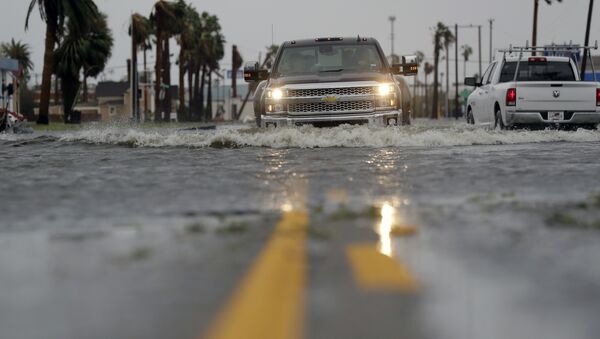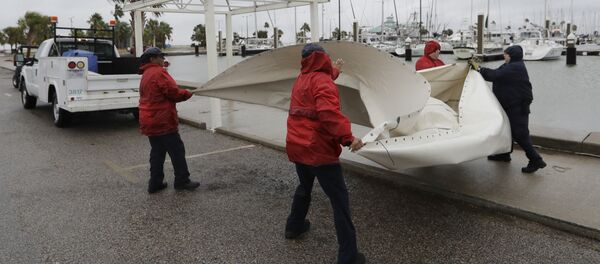Kristian Rouz – Hurricane Harvey has prompted at least 10 oil refineries on the US Gulf Coast to temporarily shut down, potentially pushing US gas prices higher. Despite this, crude oil prices have posted small gains as lower refining activity in the US might contribute to an accumulation of crude inventories, typically a drag on oil prices.
US petrol prices rose over 6 percent, to their 2-year highest, while margins rose 16 percent on Sunday due to flooding in parts of Texas and Louisiana caused by Harvey. Crude prices, however, added only 44 cents, to $47.87/bbl as expectations of oil supply disruptions remain moderate.
Refineries with a capacity of at least 2 mln bpd in the Houston and Corpus Christi areas are currently at idle, and damage assessments are underway. On Sunday, the threat of flooding has become more prominent as torrential rains brought by Harvey are forecast to continue.
"The real test will be tonight [Sunday night] when energy markets open for electronic trading and we see in numbers how bad markets believe the situation is," Patrick DeHaan of GasBuddy offered.
Exxon Mobil’s Baytown refinery, the second-largest in the US, remains shuttered, and, according to S&P estimates, some 2.2 mln bpd of fuel output is currently off the market. The US Gulf area hosts about 30 percent of the total US oil refining, fuel, and petrochemical production.
However, the abundance of crude oil in the US and global markets means that other US refiners, including those of the East Coast, could boost processing capacity at initially lower input costs.
"As more refineries go offline, there's less stress to the system because it's well supplied," Rob Smith of IHS Markit asserted.
US gasoline prices could increase by an average of 5-25 cents per gallon, depending on how soon Gulf refineries can resume production. Many US offshore oil and gas platforms in the Gulf were evacuated, and the production of crude oil has been diminished, indicating that crude prices will likely gain a modest boost.
Oil and fuel shipping is also bracing for disruptions, which will contribute to increased logistical costs, pushing prices up higher in certain regions.
"The biggest driver of how much this will increase gas prices is how much rain falls in Houston during the next three days," Andy Lipow of Lipow Oil Associates said. "We are in a wait-and-watch mode."
Beside the 10 shuttered refineries, two Texas petrochemical facilities announced their closure: Formosa Plastics in Point Comfort and OxyChem in Ingleside, which will also hamper the demand-side of the oil market.
"We could see more production be taken offline in the Gulf of Mexico," Jenna Delaney of PIRA Energy said.
The shale oil industry was also affected by flooding, with ConcoPhillips halting its operation in the Eagle Rock oilfield in south Texas.
An estimated 22 percent of Gulf Coast oil production is currently offline as of Sunday, which means that some 379,000 bpd of crude oil is off the market. The impact of Harvey to crude production is thus not quite as severe as it is to refining and processing.
Previously, two hurricanes, in 2008 and 2012, disrupted more than 1 mln bpd of the Gulf Coast oil production, also hampering the refining capacity. However, Harvey is not over yet, and its aftereffects might contribute to additional losses in output, pushing prices even higher. Market dynamics will also depend on the response of oil refiners in other parts of the country.





